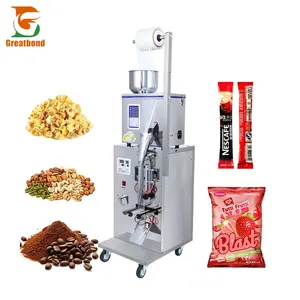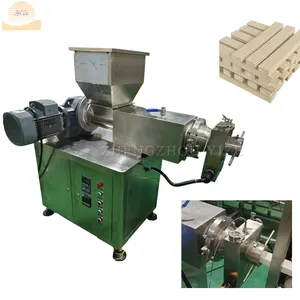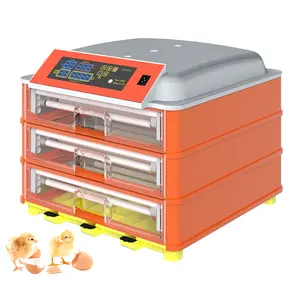Popular in your industry





























































Related Searches:











































































































Top categories
About air compressor with attachments
Introduction
Embarking on a DIY project is an exciting endeavor. Having the right tools at your disposal, such as an air compressor with the appropriate attachments, can significantly enhance your DIY experience. This guide will walk you through the basics of air compressors, their types, operation, and how to choose the right one for your needs. We will also explore the various attachments that can augment your air compressor's functionality and their safe usage. Lastly, we will delve into the numerous ways air compressors can revolutionize your DIY projects, complete with case studies and tips for maximizing efficiency.
Understanding Air Compressors: The Basics
Air compressors are essential to various operations worldwide, from large factories to small workshops. They work by forcing atmospheric air under pressure, creating potential energy stored for later use. This energy can power a wide range of pneumatic tools. Industrial air compressors operate similarly to combustion engines, requiring a pump cylinder, piston, and crankshaft to transfer energy for various tasks. They are compact, durable, require less maintenance, and are easier to move than older machinery.
Types of Air Compressors
Air compressors are categorized into two main types based on their operation: positive displacement and dynamic. Positive displacement compressors, like rotary screw and reciprocating compressors, provide a constant flow regardless of outlet pressure. Dynamic compressors, such as centrifugal and axial compressors, draw air from the outside. Compressors can also be classified by their lubrication: oil-flooded and oil-free.
How Air Compressors Work
Air compressors work by forcing atmospheric air under pressure to create potential energy that can be stored in a tank for later use. This energy transfer can be harnessed to power various pneumatic tools. These basic components can help supply air for filling up objects like tires or inflatable pool toys, or they can supply power for operating tools such as drills, nail guns, grinders, sanders, and spray guns.
Choosing the Right Air Compressor for Your DIY Projects
Choosing the right air compressor for your DIY projects involves considering factors like the motor speed, measured in horsepower, and the airflow, measured in CFM or SCFM. The air compressor's maximum psi should match or exceed the requirements of your tools or applications. The size of the compressor's tank also matters, as a larger tank holds more air, reducing the frequency of refills. Lastly, consider the sound level if noise is a concern for you.
Considerations for Size and Power
The horsepower (HP) rating for a compressor indicates the power output of the engine or motor. Higher horsepower creates greater air pressure, measured in PSI. Higher PSI means the compressor can store more air in the tank, allowing you to operate air tools longer. Cubic feet per minute (CFM) and standard cubic feet per minute (SCFM) describe the volume of air a compressor delivers at specific PSI levels. Compressor manufacturers rate storage tank size in gallons. Smaller tanks are sufficient for many projects, while larger tanks store more compressed air at higher pressures, suited for larger tasks.
Portable vs. Stationary Air Compressors
Air compressors fall into two broad categories: portable and stationary. Portable air compressors are light and mobile, ideal for home use and job sites. On the other hand, stationary air compressors are designed for fixed areas, directly attaching to a building's electrical circuit. They offer between 4 and 10-horsepower motors, making them a great investment for a garage or workshop.
Exploring Air Compressor Attachments
Air compressors are versatile tools, especially when paired with the right attachments. These include air hoses, couplers, blow guns, paint guns, filters, dryers, pressure regulators, and lubricants. Each attachment serves a unique purpose, enhancing the functionality of your air compressor.
Common Air Compressor Attachments and Their Uses
Air compressors can be enhanced with various attachments for different tasks. Air hoses are essential for connecting tools to the compressor. Couplers act as joints, ensuring a secure connection and preventing pressure loss. Blow guns use focused air to clear debris. Auto spray paint guns require a compressor to function, and their efficiency depends on the compressor's power. Filters remove damaging particles, extending the life of your equipment. Air dryers are used in environments with high air contamination. Pressure regulators maintain a steady pressure output, and lubricants keep the compressor running efficiently.
How to Safely Connect and Use Attachments
When using air compressor attachments, safety is paramount. Operators must undergo proper training and learn relevant safety standards. Before using a compressor, check various components to ensure the machine can function correctly. Create an air compressor safety checklist for operators to complete before each job. It's also important to check air compressor safety regulations from the Occupational Safety and Health Administration (OSHA) and comply with any that apply to your uses or machines.
Revolutionizing Your DIY Projects with Air Compressors
Air compressors can revolutionize your DIY projects in various ways. They can be used for painting, making the process faster and more uniform. In carpentry, an air compressor can power a nail gun, making nailing easier and more cost-effective. Upholstering becomes simpler with an air-powered staple gun. For automotive work, an air compressor can inflate tires and power an air ratchet for removing stubborn nuts and bolts. Lastly, it can be used to inflate items like bicycle tires, soccer balls, and inflatable beds, making outdoor activities and hosting guests more convenient.
Case Studies of DIY Projects Enhanced by Air Compressors
Air compressors have been instrumental in enhancing various DIY projects. For instance, they make nailing tasks easier and more cost-effective, especially when using a nail gun. Air compressors also speed up painting tasks, providing a finer, more even finish on surfaces. They are useful for DIY car repairs, helping to remove bolts from rusty spots and move tight-fitting components. Furthermore, air compressors offer efficiencies in time and money that can't be beat by standard tools, supporting a range of tasks from cleaning up sawdust to mounting cabinets or shelves.
Tips and Tricks for Maximizing Efficiency
To maximize the efficiency of your air compressor, ensure it's properly sized for your needs. Regularly check for leaks, as even a small leak can lead to significant energy loss. Pay attention to network pressure; higher operating pressure means higher energy consumption. Regular replacement of filter elements can help avoid pressure drops. Eliminate off-load running, where the compressor runs without producing air. Use genuine spare parts for long service life and efficient operation. Lastly, continuous service and maintenance are key for reliable and efficient operation.
Conclusion
Air compressors, with their versatility and power, can truly revolutionize your DIY projects. Understanding their operation, types, and the right way to choose one for your needs is crucial. Equally important is knowing about the various attachments that can enhance your air compressor's functionality. These tools can make tasks like painting, nailing, and inflating items faster, easier, and more cost-effective. However, safety and regular maintenance should never be overlooked. By following the tips and tricks shared in this guide, you can maximize the efficiency of your air compressor, making your DIY projects not just a chore, but a rewarding experience. So, gear up and let the air compressor take your DIY projects to the next level.

















































































